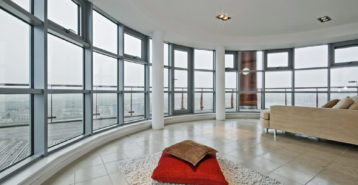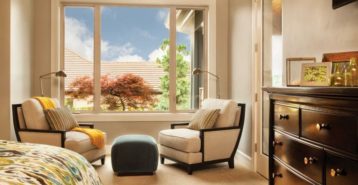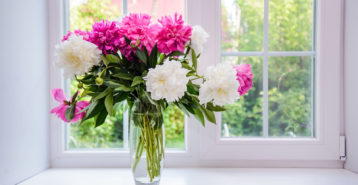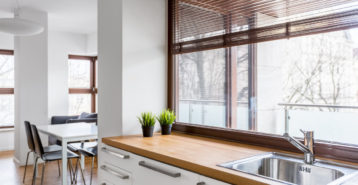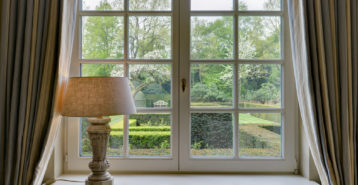Clad Wood Window Replacement
Many homeowners choose the elegance and durability of clad wood windows for their home. Clad wood windows utilize a wooden sash and frame that is covered with a protective layer on exterior surfaces for added protection. In most cases, homeowners choose clad wood windows when they want the elegance and natural beauty of wood for the interior areas of their home.
Several types of cladding materials can be used for the outer layer. While the cladding materials all provide exterior protection, you can expect specific attributes unique to the applicable cladding material, which gives you flexibility to meet your needs when replacing or purchasing windows for new construction.
The information below will discuss the benefits of clad wood windows as well as the differences between the three common cladding materials – fiberglass, aluminum, and vinyl. Depending which clad window you choose, there will be different replacement window costs associated.
Benefits of Clad Windows
Clad windows combine the most desirable features of wood window materials with a protective layer of exterior cladding that shields the inner wood from harsh outdoor climates. Thus, you can enjoy the best of both worlds with the beauty and elegance of wood framed windows on your home’s interior along with the durability of aluminum, vinyl, or fiberglass on the exterior.
With clad wood windows, you can expect the following benefits:
- Superior durability and protection
- Resistance to extreme climate conditions, such as those faced by coastal homes
- Extra protection to window sash and frame
- Resistance to condensation buildup and humidity
- Little to no maintenance and upkeep
- Increased structural stability, particularly when using aluminum clad wood windows
Aluminum Clad Wood Windows
Aluminum clad windows provide the most strength and rigidity of the three cladding materials mentioned.
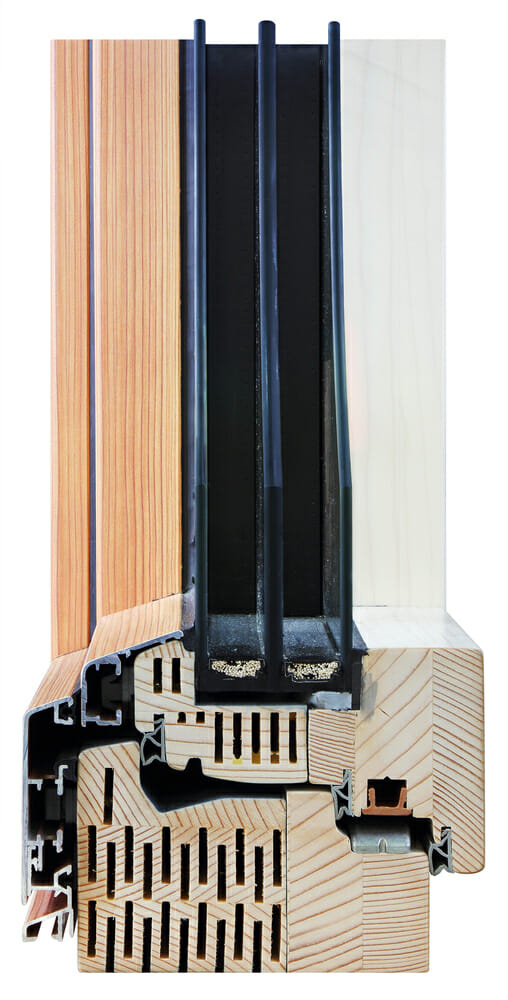
Pros
Aluminum clad windows combine the strength and durability of aluminum on the exterior with the natural beauty of wood on the interior. This window type utilizes a layer of aluminum cladding to cover and protect all exterior window frame and sash surfaces.
The lightweight material is many times stronger than wood and about three to four times stronger than vinyl or fiberglass. Its strength not only provides supreme durability against harsh climate conditions, but also provides the strongest structural integrity between the three clad window types mentioned here. The exterior cladding is available in a wide range of colors but can also be painted. Since interior wooden surfaces can be painted or stained, they offer great flexibility for interior color schemes.
Cons
The main drawback of using aluminum clad windows is that aluminum is a good conductor of heat, which can allow the transference of both hot and cold air, lowering window energy efficiency. In addition, because of aluminum’s temperature transference, you are more likely to experience condensation between the glass panes.
Vinyl Clad Wood Windows
Vinyl cladding has risen in popularity due to its superior energy efficiency versus traditional aluminum cladding.
Pros
Vinyl clad windows have outstanding insulating properties offering greater energy efficiency in your home. While their energy efficiency is superior to aluminum and wood windows, it falls a little short when compared with the energy efficiency of fiberglass clad windows.
Vinyl clad windows require little to no maintenance, as a simple cleaning restores their luster. These clad windows are available in many factory colors that resist fading, peeling and cracking. You can also paint vinyl with specialized coatings designed for the material, however, you will lose its low maintenance attributes and it could affect any warranties.
Cons
There are very few drawbacks to high quality, vinyl clad windows. However, vinyl falls short in strength and rigidity when compared to aluminum and low quality versions can warp. In addition, vinyl cladding experiences the most expansion and contraction of the three cladding materials mentioned here.
Fiberglass Clad Wood Windows
Fiberglass cladding is the newest trend in clad windows and provides the greatest energy efficiency for windows of the materials mentioned here.
Pros
Fiberglass clad windows offer superior energy efficiency due to the insulating properties of the material and its resistance to expansion and contraction, which helps to maintain a tight seal around the window opening minimizing air loss.
While fiberglass windows are available in many colors factory direct, they can also be painted, giving you more flexibility with home décor. The low maintenance material is also environmentally friendly as it requires less energy during manufacturing and generates less waste than its counterparts.
Cons
Fiberglass clad windows are the most expensive of the three cladding materials mentioned here. In addition, because fiberglass is relatively new in the window industry, the manufacturing process is still being refined and claims about their long-term stability and longevity are estimates at best.
The most important aspect of any window replacement or installation project is the quality of the install. A poorly installed window will offer little in energy efficiency and property value.
Compare top-rated windows pros in your area.
Read real homeowner reviews, explore qualifications, and view promotions. Modernize makes it easy to browse professionals and find one that will be perfect for your project.




